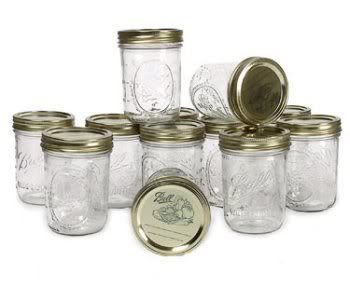
Surviving the volatile market, rising costs, and most disasters by reducing your reliance on the systems in crisis.
Thursday, July 14, 2011
The Home Canning Season

Monday, March 21, 2011
The First Sprouts of the Season!
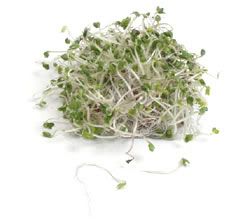
Coping With Disaster... and Children

Tuesday, March 15, 2011
The Gardening Season is Officially Here
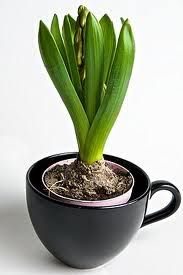
Sunday, March 13, 2011
Looking towards the short term as well
This weekend has been a real eye opener to my wife and I as we have noticed our 72 hour kits have become woefully disorganized and underequipped. Looking at the most likely potential disasters for our area, we've realized we need to really focus on those disasters and hope anything that really happens either falls in those categories or is generic enough to be survivable with common sense and good basic equipment.
We have also gone through our pantried food storage and reorganized our shelves after the Ridley's case lots sale purchases. It's amazing both how much and how little food one can have, plenty of food to survive for 3-4 months, but there are some gaps in our coverage that need to be addressed. We have plenty of canned vegetables and fruits, and plenty of dried grains and legumes, but basic items like yeast, salt, and vinegar need to be built up considerably.
With all the focus on Japan, let's not overlook the lessons taught to us from this tragedy. If the tsunami that hit Sendai had hit any metro area on the West Coast, the death toll would be considerably higher. Japan has encouraged it's citizens to be prepared for exactly the event that happened, and it paid off in a big way.
Tuesday, March 8, 2011
Small Disappointments

Well, this weekend I was reminded that I do not have control of everything. While hoping to get the rain cisterns buried, I instead woke up to find a couple inches of fresh snow on the ground. As tempting as it is to dig a 5 foot cube in frozen ground, it will be thawed again in a few days and we'll try then.
Saturday, March 5, 2011
Projects for the weekend
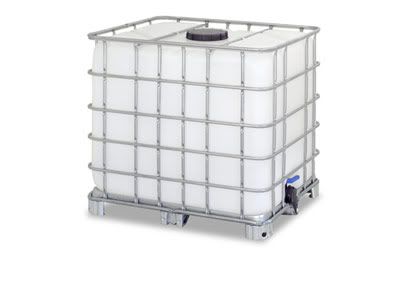
Thursday, March 3, 2011
Food Storage Deal of the Month
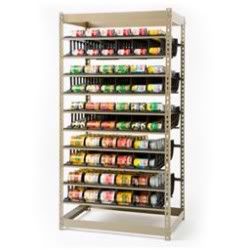
Tuesday, March 1, 2011
Emergency Water Storage
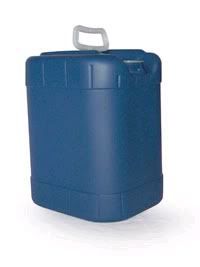
The Big Berkey - The Review
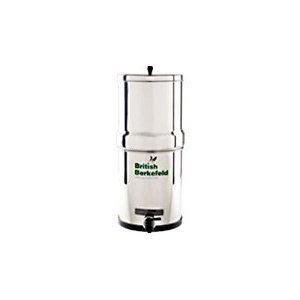
On Monday, after running a few short errands in town, we came home to find a box in our courtyard. Thinking it was maybe some kitchen gadgets that we had previously ordered, we were ecstatic to find it was our brand new Berkey! It took less than a week to get to our door, and we didn't pay for expedited shipping.
Assembly of the Berkey was similar to building a nuclear weapon. Cleanliness and attention to detail are paramount, and with the stainless steel and black plastic bits lying around my countertop, it felt like an infinitely more nefarious project. The included directions were easy to follow, and after priming our filters, the Berkey was up and running. It wasn't as big as I thought it would be, more like an older coffee urn. If it wasn't for the knob on top, it would almost fit in the space between the countertop and upper cabinets.
I added 20 cups of water to start, and after letting the lower reservior fill a bit, lifted the lever to pour a glass of water. Nothing. Nada. So I ended up taking the spigot apart and now it seems to work, albeit dripping slowly. The warrantly on the Berkey is good, so I'll be contacting the retailer about getting a replacement spigot and washers. The water quality from municipal water, however, is excellent. As previously mentioned, we have a filter in our refridgerator, and the taste of the Berkey water is much cleaner with no metallic taste. I put in cool but not cold water, and the metal has done a good job keeping the water cool even in the 70 degree house. Besides the spigot issue, the Berkey is solid, and I don't forsee it being a weak point in the family emergency water supply.
Friday, February 25, 2011
Big steps in moving off the grid
To start the week, we ordered our Big Berkey water filter. We normally use the filter built in to our refridgerator, but that requires an electric pump and needs replaced every 6 months or so. The Berkey can process quite a bit of water, about 7 gallons per hour, and uses gravity to do it's job.

Sadly, that wasn't the most expensive purchase this week. For the last few years, we have been using the Whisper Mill, a great little electric grain mill that has been easy to maintain. It has done a great job turning our hard red wheat into bread ready wheat flour, and even managed to process amaranth flour.
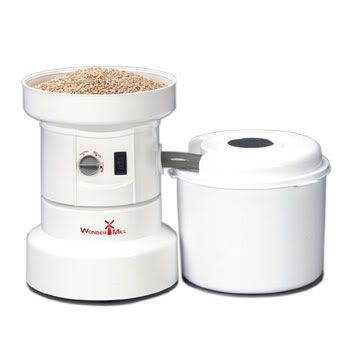
The Whisper Mill is no longer produced, but has been replaced by the nearly identical Wonder Mill. From what little I've read, there's not a lot of difference between the two, and in the pictures they look nearly identical. As far as electric mills go, the Whisper Mill has a great reputation and for us has proven reliable, even when we enthusiastically had it grind an entire 25 lb bag of wheat into bread flour. It has always worked without complain, and offered only minor criticism when we asked it to process amaranth.
However, as great as the Whisper Mill is, our long term goal is to use a hand-powered grain mill, and started the search for our next mill several months ago. Owning a Diamant was a bit out of our price range, so we looked heavily at the Country Living Grain Mill. The Country Living mill has a good reputation, a significant following, and best of all, a large support network. However, it does have a few downsides. It's aluminum construction, while tough, isn't exactly bulletproof. Parts and accessories are available, but at a premium compared to similar products. And then, while thumbing through Mother Earth News, the answer appeared. There was a full page ad featuring a shiny red mill that looked incredibly sturdy. The Grainmaker (http://www.grainmaker.com/) is also made in Montana, so my dollars are staying somewhat local. It's starting price was higher than the Country Living Mill ($425 vs. $395) but it came with the extension bar and the auger, which wou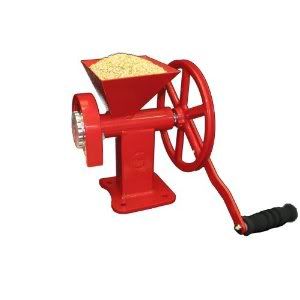 ld have more than made up the difference. The construction is powder coated steel, and each unit is made and tested individually. There were some complaints on it being difficult to turn online, but there were enough people that used it regularly without incident to bring it to the top of our list. This was a decision that we were hoping to act on in April, but there was a notification on the Grainmaker website that prices are going up in mid-March, so we bit the bullet and ordered it early. In retrospect, I probably should have ordered the clamp (discounted if purchased with your mill) but my longer term plans would make it useless. We are already planning on how many different grains we will try grinding as soon as it arrives. The general rule of thumb is they run a 3 week build time, but that is just time to collect more flax, amaranth, spelt, and anything else we can get our hands on. Once we get the Berkey and Grainmaker in, we'll have to put them together and add reviews.
ld have more than made up the difference. The construction is powder coated steel, and each unit is made and tested individually. There were some complaints on it being difficult to turn online, but there were enough people that used it regularly without incident to bring it to the top of our list. This was a decision that we were hoping to act on in April, but there was a notification on the Grainmaker website that prices are going up in mid-March, so we bit the bullet and ordered it early. In retrospect, I probably should have ordered the clamp (discounted if purchased with your mill) but my longer term plans would make it useless. We are already planning on how many different grains we will try grinding as soon as it arrives. The general rule of thumb is they run a 3 week build time, but that is just time to collect more flax, amaranth, spelt, and anything else we can get our hands on. Once we get the Berkey and Grainmaker in, we'll have to put them together and add reviews.
Thursday, February 24, 2011
The 2011 Garden - Baby steps into Permaculture
One of our biggest changes from 2009 to 2010 was the addition of raised beds. These went a long ways to reducing the amount of weeding done each week, and for the crops that survived the frost, made a nice home for them. Our total cost for 8 raised beds (2'x4') was absolutely nothing. Many fencing supply companies sell vinyl fencing. The vinyl fencing is sold to them with a 2'x4' pine brace around it. They just slide the braces off and throw them away. Going to a local lumberyard to pick up lumber for the beds, they mentioned that we could have the large stack of braces for free, as well as some trim pieces of cedar and fir left over from fencing projects. It took a few trips with our van, but we manged to get them home and filled with soil. This year, we are adding another 20 beds of the same size, with leftover braces we can build cold frames for the young plants so we do not have a replay of last year.
The selection in the garden is growing as well. Last year, we grew Italian zucchini (Costata Romanesco), some summer squash, and carrots (Tendercrisps) successfully. Just about everything else was killed by the frost. In addition to the Costata Romanesco, we are growing 4 tomato varieties (2 cherry, 1 paste, and 1 beefsteak variety), 3 types of carrots, 4 types of lettuce, celery, amaranth, 4 new squashes, 4 types of melons, 2 types of beans, 2 types of peas, and broccoli. We are also adding blueberry bushes, elderberry bushes, an additional grape vine, and a few new fruit trees. Our experiment with corn last year taught us that if you have a small place to plant, corn is not going to work in your favor. In a different climate, maybe, but our little homestead just didn't agree with our sweet corn crop and we ended up with tiny ears.
For our locale, we will not plant outside until nearly Memorial Day, but once the beds are prepped, I'll have to post some pictures. After all the work going into it, there has to be at least some record of accomplishment.
After a long hiatus...
Since the last post, there have been some changes, both good and bad, to my long term goals. My garden was tripled in size in 2009 from it's 2008 size. In 2010, it grew again. In 2011, it will be more than double the size of the 2009 garden plot. We have moved from in ground planting to raised beds, which would have done wonders for us if a late frost hadn't killed off most of the 2010 crop. I'll add a new post that covers the detail of the bigger garden plot, the new plant additions, and our lessons learned over the last 2 years.
In other news, we have done our best to reduce our footprint; not just carbon, but also in our impact on the environment immediately around us. We are working towards independence from the energy grid, while still being grid tied, and have made some progress, especially in how we prepare our meals. 2011 is going to see a lot of projects come to fruition, some big, some small. I'll do my best to actually keep track of each project and post what we tried, what we learned, and what we'd do better next time.